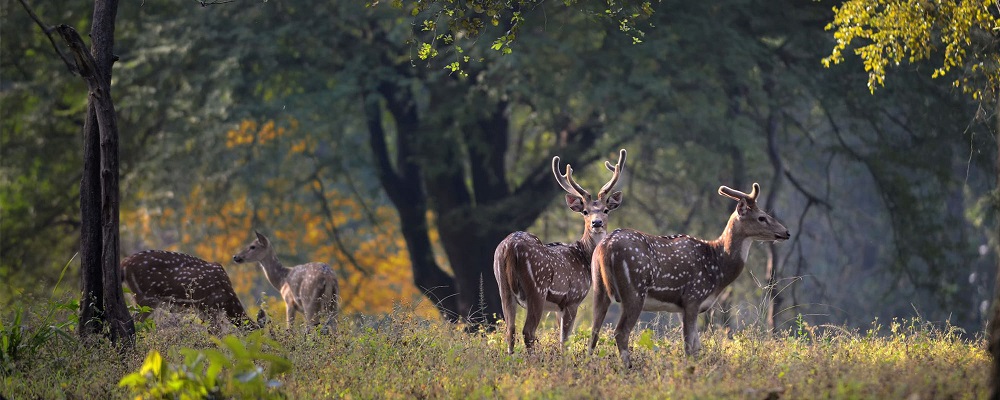Satpura National Park is a hidden gem for nature enthusiasts and wildlife lovers. Spread across the rugged terrains of Madhya Pradesh, this park offers a unique and immersive experience of the natural world. As you embark on a journey through the Satpura region, you'll discover the park's breathtaking landscapes, diverse wildlife, and the sense of tranquility that only a pristine wilderness can provide.
A Mosaic of Habitats:
Satpura National Park is renowned for its diverse range of habitats. From dense forests to meandering rivers, rolling hills, and extensive grasslands, the park's landscapes are as varied as they are beautiful. The Tawa Reservoir, which is part of the park, adds to its unique charm, providing a home for numerous aquatic species.
Wildlife Encounters:
One of the primary reasons to visit Satpura is its incredible wildlife. The park is home to a wide range of species, including tigers, leopards, sloth bears, Indian gaur, sambar deer, and numerous smaller mammals. Birdwatchers will also be in paradise, as the park is home to over 300 avian species, including the Malabar pied hornbill, Indian roller, and the endangered Indian skimmer.
Tiger Tales:
Satpura National Park is an integral part of the Central Indian Tiger Reserve. While tigers are undoubtedly the star attraction, leopards, wild dogs, and hyenas also call this park home. Visitors can embark on thrilling jeep safaris and boat rides in search of these magnificent big cats.
River Safaris:
One of the unique features of Satpura is its river safaris. Exploring the park from the Tawa Reservoir by boat provides a refreshing perspective of the park's wildlife and landscapes. These safaris offer the chance to spot crocodiles, gharials, and a host of birdlife along the water's edge.
Walking Safaris:
For a more immersive and intimate experience, you can opt for walking safaris. Accompanied by experienced naturalists, these safaris take you on a journey through the park's wilderness, allowing you to observe the smaller wonders of nature up close. This is a thrilling way to connect with the environment and witness the intricate web of life in the park.
Conservation Efforts:
Satpura National Park is not just a testament to India's biodiversity; it's also a shining example of successful conservation efforts. The park's dedicated initiatives focus on preserving the rich ecosystems, mitigating human-wildlife conflicts, and engaging with local communities to promote conservation awareness.
Responsible Tourism:
While exploring the beauty of Satpura, it's essential to practice responsible tourism. Follow park rules, maintain a safe distance from wildlife, and ensure that your visit has a minimal impact on the environment. Supporting the local communities through your journey can also contribute positively to the region.
Visiting Satpura:
Satpura National Park is accessible from several major cities in India, making it a convenient destination for nature enthusiasts. The best time to visit is during the winter months, from October to April, when the weather is pleasant and wildlife sightings are at their peak.
Conclusion:
A visit to Satpura is an opportunity to connect with the wild, observe nature's wonders, and appreciate the importance of preserving these pristine environments. It is a place where tranquility and adventure merge, and the beauty of the natural world unfolds before your eyes. Satpura is a reminder of the importance of protecting our natural heritage for generations to come.




